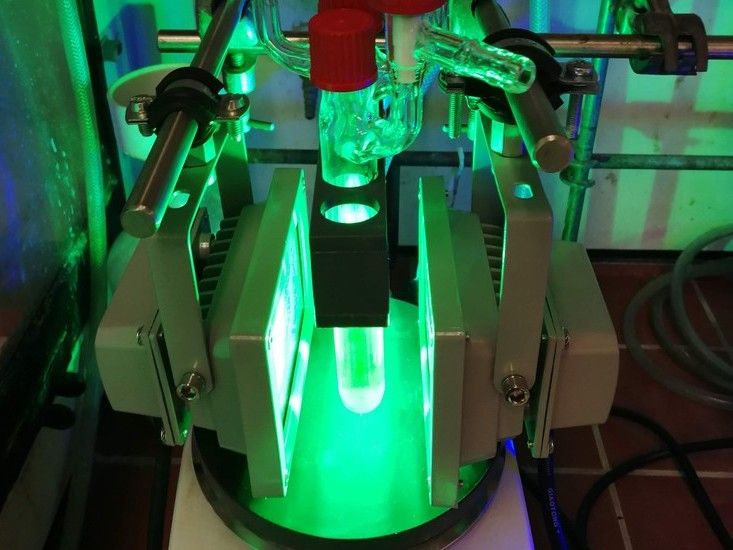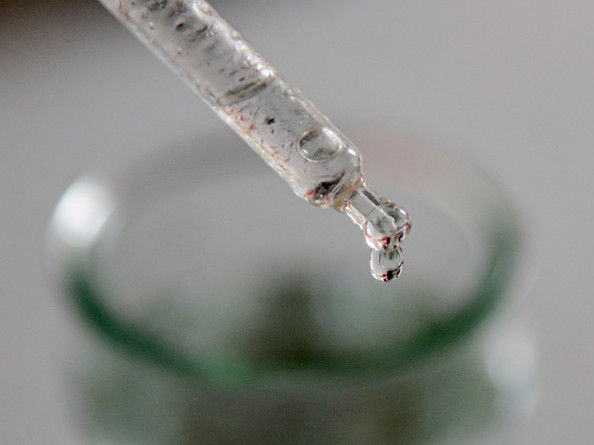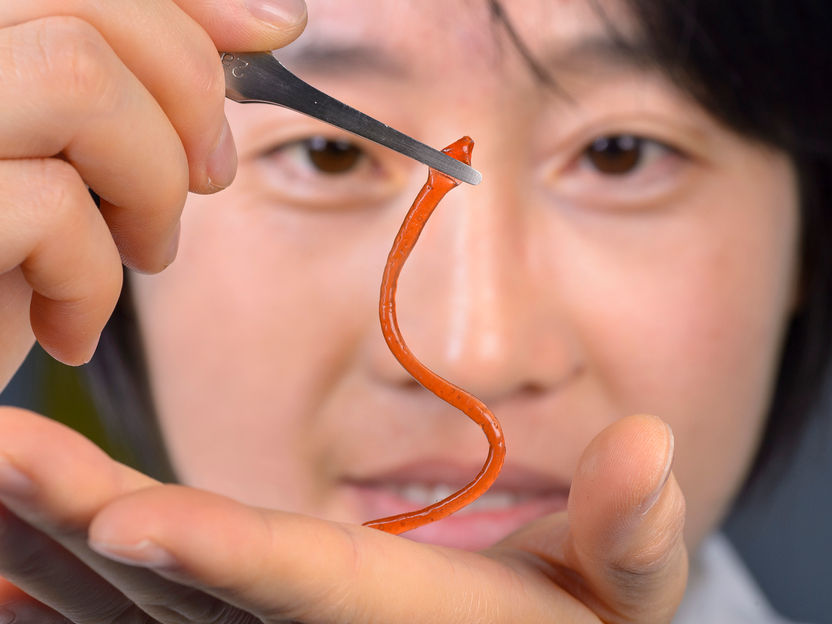New research leads to sensors that detect contaminants in water
Many organic contaminants in the air and in drinking water need to be detected at very low-level concentrations. Research published by the laboratory of Prashant V. Kamat, the John A. Zahm Professor of Science at the University of Notre Dame, could be beneficial in detecting those contaminants.
The Kamat laboratory uses Surface-Enhanced Raman Spectroscopy to make use of silver nanoparticles to increase the sensitivity limit of chemical detection. Researchers in this study have prepared a semiconductor-graphene-metal film that has distinct advantages: The absorption of organic molecules on the film's graphene surface increases the local contaminant concentration adjacent to silver nanoparticles.
The researchers have investigated the use of graphene oxide films in which the semiconductor titanium dioxide (TiO2) and metal nanoparticles are deposited on opposite sides of the graphene surface. "We are currently working toward the detection of environmental contaminants at even lower levels," Kamat says. "Careful control of metal size and loading will be the key to optimize strips for testing water quality."
Under UV illumination, the electrons from TiO2 are captured by the graphene oxide film and shuttled across the film to reduce metal ions into metal nanoparticles. This electron-hopping process across the graphene oxide film allows the design of a side-separated semiconductor-metal nanoparticle architecture.
Graphene, a two-dimensional crystalline form of carbon, is known for its remarkable mechanical strength, very high thermal and electrical conductivity and broad variety of applications. While the conducting properties of graphene sheets deposited on various substrates are well understood, the Kamat group has demonstrated that the transport of electrons is not limited to the 2-D plane. Here, the hopping of electrons from one side of the graphene allows for the side-selective deposition of silver nanoparticles.
"Another potential application is in the area of photocatalytic generation of solar fuels," Kamat says. "For example, having semiconductor nanoparticles on one side of a graphene sheet and a metal catalyst on the other side, one can create a hybrid assembly that can selectively split water into oxygen and hydrogen."
The paper, "Electron Hopping Through Single-to-Few-Layer Grapheme Oxide Films: Side-Selective Photocatalytic Deposition of Metal Nanoparticles," was published recently in the Journal of Physical Chemistry Letters. Authors are Ian Lightcap, Sean Murphy, Timothy Schumer and Kamat. The research was supported by the Office of Basic Energy Sciences, Department of Energy.
Most read news
Topics
Organizations
Other news from the department science
These products might interest you

SprayMaster inspex by LaVision
Quality Control for Your Spraying Process Through Digital Spray and Particle Analysis
Reliable, Automated, Digital - The Geometry Measurement of Your Spraying Process in Real Time

FireSting-PRO by PyroScience
New fiber optic measuring device: Precise measurements even in the smallest volumes
Measure pH, oxygen and temperature even under sterile conditions

VEGAPULS | VEGABAR | VEGASWING by VEGA Grieshaber
Cyber-safe level measurement - here's how it works
Find out more about the unique sensor for liquid and solid media

Get the chemical industry in your inbox
By submitting this form you agree that LUMITOS AG will send you the newsletter(s) selected above by email. Your data will not be passed on to third parties. Your data will be stored and processed in accordance with our data protection regulations. LUMITOS may contact you by email for the purpose of advertising or market and opinion surveys. You can revoke your consent at any time without giving reasons to LUMITOS AG, Ernst-Augustin-Str. 2, 12489 Berlin, Germany or by e-mail at revoke@lumitos.com with effect for the future. In addition, each email contains a link to unsubscribe from the corresponding newsletter.
Most read news
More news from our other portals
See the theme worlds for related content
Topic World Spectroscopy
Investigation with spectroscopy gives us unique insights into the composition and structure of materials. From UV-Vis spectroscopy to infrared and Raman spectroscopy to fluorescence and atomic absorption spectroscopy, spectroscopy offers us a wide range of analytical techniques to precisely characterize substances. Immerse yourself in the fascinating world of spectroscopy!

Topic World Spectroscopy
Investigation with spectroscopy gives us unique insights into the composition and structure of materials. From UV-Vis spectroscopy to infrared and Raman spectroscopy to fluorescence and atomic absorption spectroscopy, spectroscopy offers us a wide range of analytical techniques to precisely characterize substances. Immerse yourself in the fascinating world of spectroscopy!
Topic world Sensor technology
Sensor technology has revolutionized the chemical industry by providing accurate, timely and reliable data across a wide range of processes. From monitoring critical parameters in production lines to early detection of potential malfunctions or hazards, sensors are the silent sentinels that ensure quality, efficiency and safety.

Topic world Sensor technology
Sensor technology has revolutionized the chemical industry by providing accurate, timely and reliable data across a wide range of processes. From monitoring critical parameters in production lines to early detection of potential malfunctions or hazards, sensors are the silent sentinels that ensure quality, efficiency and safety.
Last viewed contents

Soluble Elements from a New Corner of the Periodic Table

Titanium catalyst enables reactions with the help of green light - Cost-effective and non-toxic alternative to the ruthenium and iridium catalysts used so far
Tomra

How water helps the substrate into the enzyme - When water is present in tiny quantities it develops special properties


























































